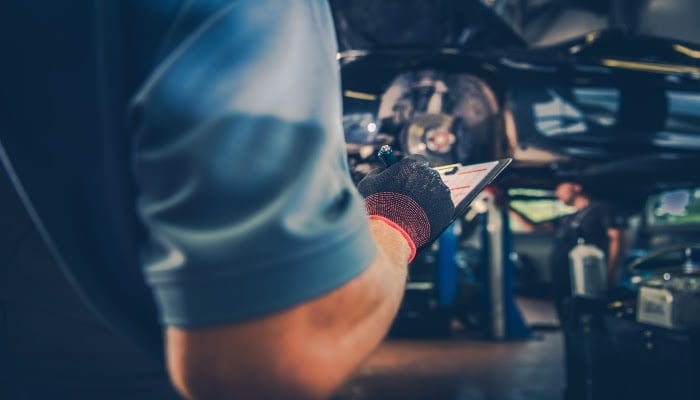Did you know? Downtime caused by equipment malfunction can cost facilities anywhere from 5% to 20% of their productive capability. An effective preventive maintenance checklist can help limit production downtime and extend the equipment's service life. For most facilities, preventative maintenance is a strategy of choice that allows them to keep their assets in an operative state.
What Is a Preventive Maintenance Checklist?
A preventive maintenance checklist is an itemized list of tasks that guide the technician through a process of asset preventative maintenance (PM). The checklist aims to establish reliable working processes within a factory, facility, and any other enterprise by ensuring that all maintenance technicians follow the PM procedure to the last detail.
There are two primary types of preventive maintenance programs:
- Pass-or-fail checklist, and
- Step-by-step checklist.
The pass-or-fail checklist can identify problems and prevent bigger issues by scheduling maintenance inspections sooner than usual. These checklists are typically done by machine operators, although any maintenance personnel can do them. A step-by-step checklist outlines instructions for changing a specific part from beginning to end. This checklist ensures no crucial steps are skipped during a PM so failure can be avoided. Maintenance technicians typically do step-by-step checklists.
Benefits of a Preventive Maintenance Checklist
A proper preventive maintenance checklist can be beneficial in several ways, such as:
- Tasks and outcomes are standardized - When tasks are standardized, there are no guesswork or miscommunications, which reduces the chances of error.
- Work is more efficient, and labor is maximized - PM checklists make it easier for technicians to complete the maintenance procedures, making them quicker. This reduces downtime and allows technicians to move on more skilled tasks.
- Troubleshooting and reporting are easier - Because PM checklists provide consistency, they create an excellent base for measuring maintenance activity. This helps technicians report with more certainty and pinpoint actions that either did or didn't lead to better results.
Elements of an Effective Preventive Maintenance Checklist
An excellent PM checklist is comprised of these seven elements:
1. Focus on safety - PM checklists should begin and end with safety instructions, such as required PPE, lock-out tag-out instructions, and steps for sanitizing the area.
2. Ensuring that PM checklists are sequential - PM checklists should outline tasks in the order of completion.
3. Following the preventive maintenance framework - A PM checklist should follow the following order of tasks when appropriate: safety, clean, adjust, inspect, replenish, replace, rebuild.
4. Including necessary details - PM checklists should have enough details that new technicians can complete the tasks by reading the checklist.
5. Providing photos and diagrams - PM checklists should provide visual representations of the instructions to make the task easier and clarify vagueness.
6. Being concise - Every task on a PM checklist has to have explicit action and a goal to ensure maximum efficiency.
7. Inserting total time for the PM checklist or time requirements for each task - Technicians should have enough time for tasks, so they don't feel rushed.
Take Away
PM checklists are a vital part of an effective PM program. They eliminate communication problems and reduce the chance of human error. Before you start planning your next maintenance, make sure you have an excellent checklist to act as your guide to better efficiency and safer operation. You can create your custom PM checklist with The Checker.
Feel free to browse our checklist library for ideas and other types of inspections.











